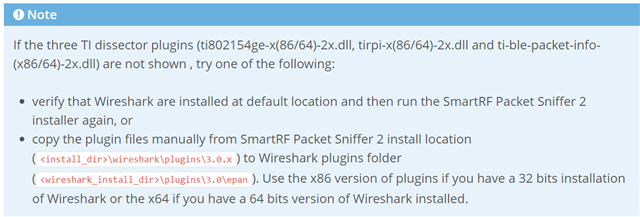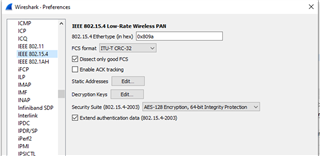Other Parts Discussed in Thread: SIMPLELINK-CC13X0-SDK, CC1350, TIMAC
Tool/software:
I have the CC1350 LaunchPad and need to use it for packet sniffing the 15.4 protocol. I am unable to find the firmware files needed to be installed on the board. I downloaded the Simplelink-CC13x0-SDK and it downloaded a newer version of the SDK (simplelink_cc13x0_sdk_4_20_02_07) and it doesn't have the C:\ti\simplelink_cc13x0_sdk_1_30_00_xx\tools\ti154stack\TiWsPc2\sniffer_fw\bin file needed to update with SmartRF Flash.
Where can I find the files or is there a new version of all this I can install?
Thanks,
Kevin




